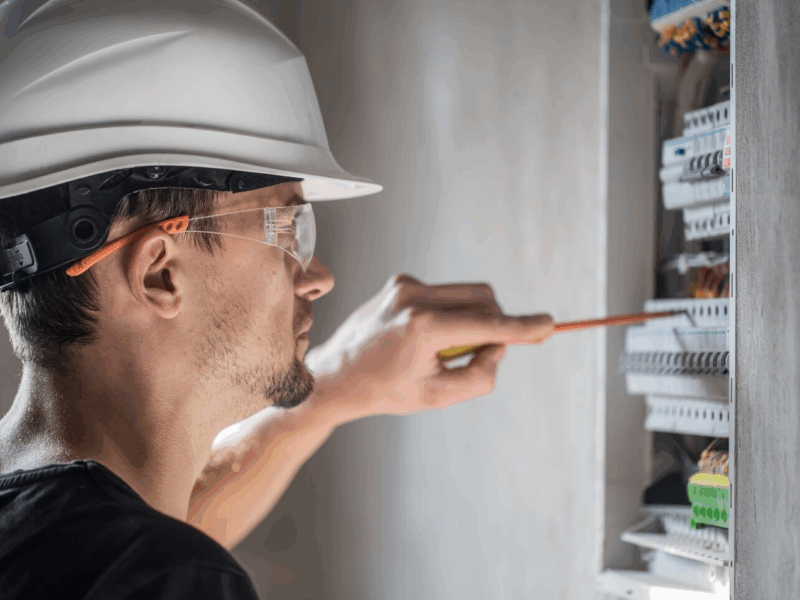Whether it’s a running toilet, a dripping faucet, or a sink that drains slowly, every homeowner will eventually come across plumbing problems. Even though these issues are frequently small, if they are not fixed, they may become expensive. Daily routines can be disturbed by plumbing problems, which can also raise water bills and, in extreme situations, cause structural damage. Thankfully, a lot of common plumbing issues can be identified and resolved without the assistance of a professional. Maintaining a functional home can be made easier by being aware of these problems and their easy fixes, which can save time and money. This article examines five of the most prevalent plumbing issues and offers simple solutions that homeowners can do on their own.
Faucets That Drip
The leaky faucet is one of the most common plumbing annoyances in houses. Even though it can seem like a small inconvenience, a single faucet that drips once per second can waste almost 3,000 gallons of water every year. Usually, a worn-out washer or O-ring inside the faucet assembly is the main source of this problem. Wear and tear cause these parts to deteriorate over time, making a watertight seal impossible. Turning off the water supply, dismantling the faucet, and replacing the worn washer or O-ring are the simple steps involved in fixing a leaky faucet. Replacing the rubber washer usually fixes compression faucet issues. It can be necessary to replace the cartridge or seal in ceramic-disk, ball, or cartridge faucets.
Blocked Drains
Blocked and clogged drains, which most frequently occur in showers, bathroom sinks, and kitchen sinks, are another widespread issue in homes. The accumulation of hair, soap scum, grease, and other debris is typically the source of these jams. Cooking oils and food particles are common causes in kitchen sinks. Hair and soap residue can cause obstructions in bathroom drains. Using a plunger or a drain snake is one of the simplest methods for clearing small obstructions. Also, use drain guards, refrain from pouring grease down the kitchen sink, and practice regular cleaning with vinegar and baking soda to break down buildup naturally to prevent clogs, but also make sure to find an expert in blocked drains in your area, just to be sure that you don’t run into problems in the future.
Toilets That Run
Every day, a running toilet can waste hundreds of gallons of water, which will raise your utility costs considerably. This problem is frequently caused by issues in the toilet tank, like a leaky fill tube, an unbalanced float, or a malfunctioning flapper valve. Water regularly leaks from the tank when the flapper valve, which regulates the flow of water into the bowl, is not correctly sealed. A quick, low-cost solution that typically fixes the problem is to replace the flapper. Sometimes the water can be stopped from flowing by tightening the fill tube connectors or changing the float.
Low Water Pressure
An annoying problem that can impact faucets, showers, and other fixtures is low water pressure. Numerous factors, such as mineral accumulation in pipes or aerators, partially closed shut-off valves, or concealed plumbing system leaks, could be the source of this issue. Examining if the low pressure is limited to a single fixture or pervasive throughout the house is one of the first considerations in troubleshooting. Cleaning the showerhead or aerator will frequently restore normal flow if it’s isolated. If several fixtures are impacted, there may be a leak in the system or a problem with the main water supply.
Seeping Pipes
If leaky pipes are not fixed right away, they can result in serious water damage and the formation of mold. They frequently happen at pipe junctions and can be brought on by freezing temperatures, high water pressure, or corrosion. Many small leaks can be temporarily fixed with pipe clamps, epoxy putty, or waterproof tape, but some may need to be repaired by professionals. Before using any repair materials, it’s crucial to shut off the water supply and dry the area. Leaks can be detected early with routine inspections of exposed pipes, particularly under sinks or in basements.
Homeowners are better equipped to respond quickly and efficiently when they are aware of typical plumbing issues and their easy fixes. Even while a professional plumber is necessary in some circumstances, gaining a basic understanding of home plumbing can boost confidence and result in significant cost savings over time. Homeowners may guarantee that their plumbing systems continue to function at their best for many years to come by taking preventative measures.


